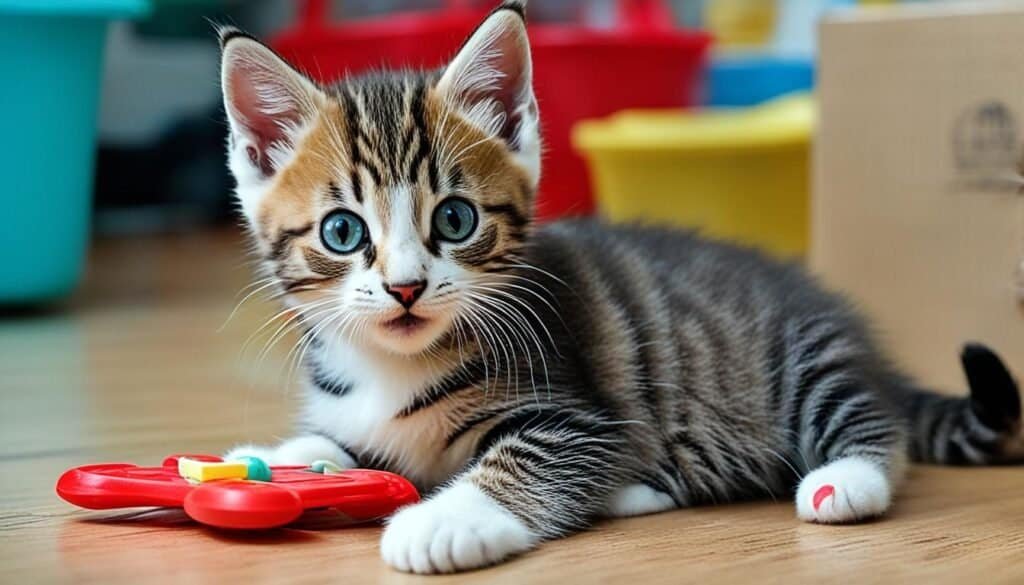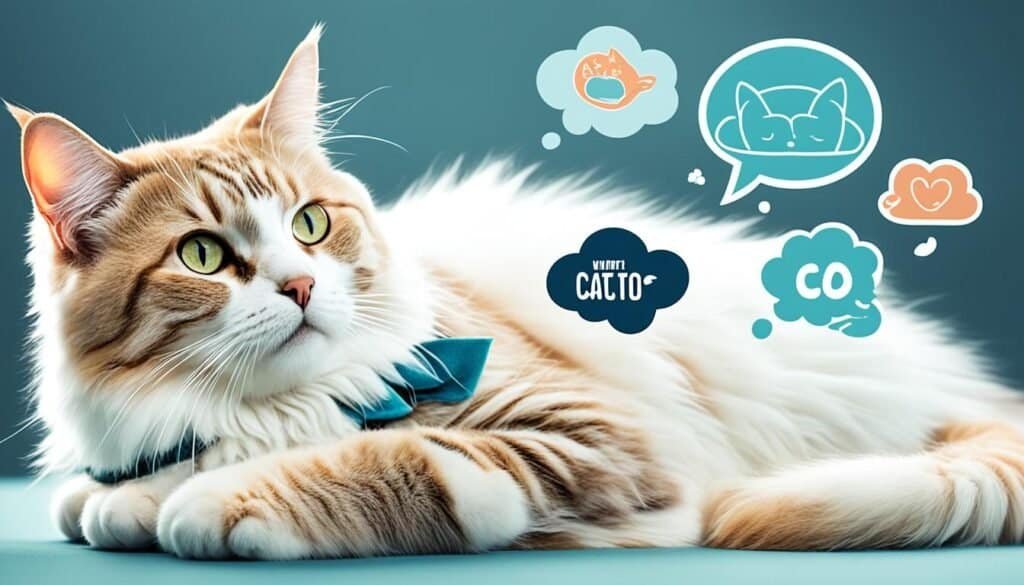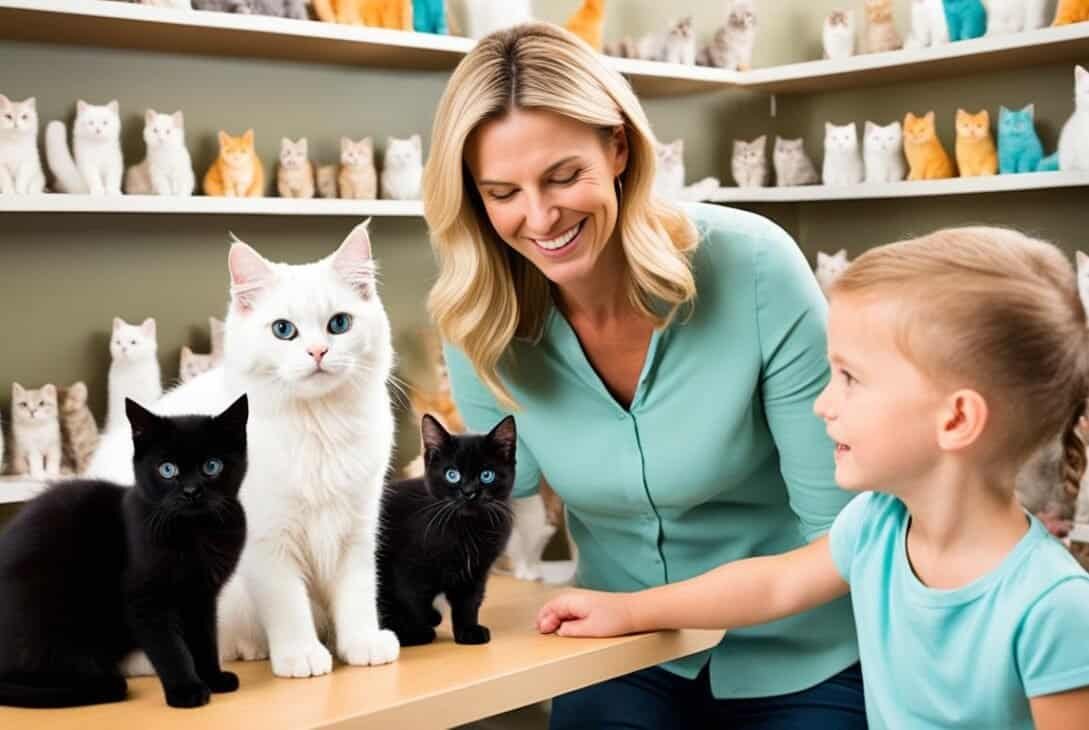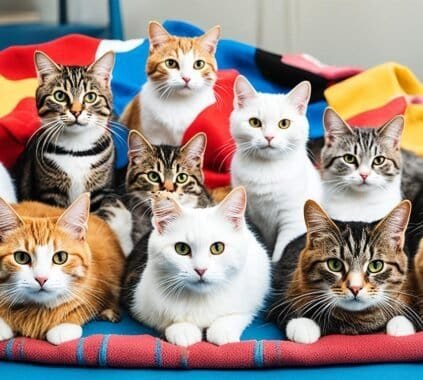Before bringing a cat into your life, it’s important to consider factors that will help you in choosing a cat that fits your lifestyle. Whether you’re a first-time cat owner or looking to add another feline companion to your household, thoughtful consideration is essential to ensure a perfect match.
When choosing a cat, there are several important factors to think about. These include:
- Best cat breeds for families
- How to choose a cat as a pet
- Factors to consider when selecting a cat
- Choosing a cat that fits your lifestyle
- Tips for picking the right cat
- Things to think about before getting a cat
- Picking the perfect cat for you
By carefully considering these factors, you can ensure that your new feline friend will be a great fit for your home and family.
Key Takeaways:
- Choosing the right cat involves considering factors such as breed, temperament, and compatibility with your lifestyle.
- Deciding between a cat or a kitten depends on your preferences and ability to provide the appropriate care and attention.
- The gender of a cat can influence their interactions with other cats and their reproductive behavior.
- Consider the grooming needs and energy levels of different cat breeds when making your selection.
- Understanding a cat’s communication and unique personality traits can help you build a strong bond.
Should I get a Cat or a Kitten?
Deciding between getting a cat or a kitten depends on your lifestyle and preferences. Both options have their own advantages and considerations to keep in mind.
Choosing a Kitten
If you decide to get a kitten, be prepared to invest time and effort into their care and training. Kittens are known for their boundless energy and playfulness. They require lots of attention, playtime, and socialization to grow into well-adjusted adult cats.
When choosing a kitten, look for friendly responses and positive interactions. Ensure they have been examined by a vet and are in good health. Kittens should receive their initial vaccinations, deworming, and appropriate parasite prevention treatments.
Choosing an Adult Cat
Adopting an adult cat can be a great option for those with a busier lifestyle or who prefer a cat with a more established personality. Adult cats generally have lower energy levels and may require less supervision and playtime compared to kittens.
Consider the breed, personality, and preferences of the cat when making your selection. Take note of their behavior, friendliness, and compatibility with other pets if you have any. It’s important to provide a safe and comfortable environment for the cat to adapt to their new home.
No matter whether you are choosing a cat or a kitten, remember that adopting a pet is a long-term commitment. Take into account your lifestyle, available time, and level of responsibility before making your decision.
For adopting a kitten, be prepared to invest time and effort into their care and training, while adult cats may require less supervision and playtime. Consider your preferences, the energy levels you can handle, and the type of interaction you desire when deciding between a cat or a kitten.
Cat Gender
When choosing a cat, understanding the differences between male and female cats can help you make an informed decision. The gender of a cat can impact their interactions with other cats and their reproductive behavior.
If you add two cats of the same gender, you can expect more drama and a longer time to integrate them into your household. Blending two adult female cats together is the most risky. But again, it totally depends on the cats.
A kitten or a youngster is your safest choice if you have an adult female cat and are looking to adopt another female. Two female kittens raised together should be fine as well.
Contrary to popular belief, two male cats will not fight each other to the death. Cats that have lived on the streets and have had to defend themselves will be more aggressive even after being neutered. Male cats that have lived previously with other male cats should accept a new male companion.
Difference between Male and Female Cats
Male cats, also known as toms, are generally larger and more muscular than female cats, known as queens. Toms tend to be more territorial and may exhibit marking behavior, such as spraying urine, to communicate their presence. On the other hand, queens can display more nurturing behaviors and may become vocal and restless when in heat.
Choosing Opposite Genders for Multiple Cats
If you’re considering adding another cat to a household that already has a resident cat, choosing opposite genders is often recommended. This can help reduce the likelihood of conflicts and territorial disputes between the cats. However, it’s important to note that every cat’s personality is unique, so individual compatibility should be considered as well.
If you are looking for a friendly, affectionate cat to blend in with an existing cat, select a male. Male cats tend to be more social and affectionate with both cats and their humans. They commonly form strong bonds with other cats in the home, even when they are not from the same litter.
On the other hand, male cats are usually more playful than females, and they can get pretty wild. This is great if you are looking for a fun companion and have the time to dedicate to your feline friend. If you’re looking for more of a quiet companion, though, it might be better to adopt a female.
A pair of socially-inclined, adults of the opposite gender is the best mix. But it totally depends on the cats in question. Each cat is unique and the combination of blending any two cats together will create a unique feline culture in your home.
Neutering Kittens
Neutering or spaying kittens at around four months old is highly recommended. This procedure helps prevent unwanted behaviors associated with mating, such as aggression, spraying, and wandering. It also eliminates the risk of unplanned litters and reduces the chances of certain health issues in both male and female cats.

Signs of Reproductive Behavior
Male and female cats exhibit different signs of reproductive behavior when they are not neutered. Unneutered males may display aggressive behavior, vocalize excessively, or exhibit roaming tendencies to find a mate. Unspayed females may go into heat, during which they may become more affectionate, vocalize loudly, and assume mating positions.
Understanding cat gender and its impact on behavior and interactions can help you provide the best environment for your feline companions.
Cat Breeds: How do I Choose a Breed that is Perfect for me?
When it comes to choosing a cat, there are various breeds to consider, each with its own unique characteristics. To find the perfect match for your lifestyle, it’s important to take several factors into account.
1. Breed Temperament and Lifestyle
The temperament of a cat breed is a crucial factor to consider. Some breeds are known to be sociable, while others prefer solitude. Determine whether you want a cat that loves to cuddle and interact with children, or one that thrives in a quieter environment. Remember to match the energy level of the breed to your own lifestyle, as some cats require more exercise and playtime than others.
2. Compatibility with Other Pets
If you already have other pets, it’s important to choose a cat breed that will get along well with them. Some breeds are naturally more compatible with dogs or other cats, while others may be more territorial. Research the breed’s compatibility with other animals to ensure a harmonious environment for all your furry friends.
3. Grooming Needs
Grooming requirements can vary greatly among different cat breeds. Some breeds have long hair that requires regular brushing to prevent matting, while others have shorter hair that requires minimal grooming. Consider how much time and effort you can dedicate to grooming and choose a breed that aligns with your availability and preferences.
By carefully considering these factors, you can choose a cat breed that not only matches your lifestyle but also provides a lifelong companion. Remember, each breed has its own unique qualities, so take the time to research and find the one that is perfect for you.
Cat Personality and Communication
Cats have their unique ways of communicating and showing affection, distinguishing them from dogs. Understanding how cats communicate and interpreting their behavior is crucial for building a strong bond with your feline companion.
To understand cat communication, pay attention to their body language, vocalizations, and gestures. For example, when a cat rubs their face against you, it’s a sign of affection and claiming you as part of their territory. Similarly, their purring indicates contentment and happiness.

Each cat has its own temperament, which can influence their behavior and interactions with you and other animals. While genetics play a role in determining a cat’s temperament, their upbringing and environment also play significant roles.
When possible, gather information about the parent cats’ temperaments to gain insights into what to expect from their offspring. This can help you better understand your cat’s unique personality traits and adjust your approach to their needs.
Cat Health
Ensuring the health of a cat is crucial, especially before adopting one. Before bringing a cat into your home, it’s important to check their overall health. A thorough vet check-up is recommended to ensure you’re adopting a cat that is in good condition and free from any underlying health issues. Regular vet check-ups and vaccinations are essential for maintaining your cat’s health throughout their life.
Cat health check ups are incredibly beneficial for every cats. In addition to making sure your cat is physically well and thriving, regular cat health check ups can inform you about their instinctive needs and dispositions, figure out a balanced diet for their well-being, and update their vaccination. This article answers your common questions regarding cat check ups, such as when to take cat to emergency vet or what is the vet check up cost. All veterinarians follow a common cat health check up routine when it comes to a wellness examination.
Signs of a Healthy Cat
- Bright and clear eyes
- Clean ears without any discharge or odor
- A clear, moist nose
- A well-shaped and proportionate body
These signs indicate that the cat is in good health and well-cared for. When visiting a shelter or breeder, observe the cats closely to ensure they display these signs of good health.
Common Health Issues in Cats
Even with proper care, cats can develop health issues. Some common health conditions in cats include:
- Respiratory infections
- Flea and tick infestations
- Gastrointestinal problems
- Urinary tract infections
- Dental issues
Catching these health issues early helps ensure prompt treatment and a higher chance of a full recovery. Regular vet check-ups play a significant role in detecting and addressing these issues in a timely manner.
Regular Cat Care Expenses
When considering adopting a cat, it’s crucial to be aware of the regular expenses associated with their care. Some common recurring expenses include:
- High-quality cat food
- Litter and litter box supplies
- Grooming tools and products
- Routine vaccinations and deworming
- Annual check-ups and preventive healthcare
It’s important to budget for these expenses to ensure you can provide the necessary care and well-being for your furry friend.
Conclusion
Adopting a pet in the Philippines is not only a fulfilling experience for you but also a life-changing opportunity for animals in need. By opening your heart and home to a rescued companion, you contribute to reducing the stray animal population and provide them with the love and care they deserve.
When considering pet adoption, it’s crucial to prioritize responsible pet ownership. This includes carefully assessing factors such as cost, commitment, and compatibility with your family and lifestyle. Taking the time to evaluate your readiness for pet ownership ensures that you can provide a nurturing and supportive environment for your new furry friend.
One of the essential steps in the adoption process is finding reputable adoption centers. These centers play a vital role in connecting potential pet owners with rescue animals in need of homes. Research and choose adoption centers that have a good reputation, prioritize the well-being of their animals, and provide proper veterinary care.
Once you have brought your newly adopted pet home, it’s important to provide them with the love, attention, and care they need. This includes proper training, socialization, and regular veterinary check-ups. Taking the time to understand your pet’s individual needs and providing them with a safe and stimulating environment will help foster a loving and lifelong bond.
FAQ
Should I get a Cat or a Kitten?
What is the difference between male and female cats?
When choosing a cat, which breed is perfect for me?
How do cats communicate and show affection?
How can I ensure the health of my cat?
Why is pet adoption important in the Philippines?
Last modified: March 4, 2024














[…] working together, we can create a better future for cats in the Philippines. Let’s continue to promote pet adoption, feline welfare, and animal welfare as a whole, […]
[…] conclusion, adopting a cat in the Philippines is a meaningful and compassionate choice that not only brings joy to the adopter but also offers a […]